Qianchuan Scenic Spot
Qianchuan Scenic Spot
Qianchuan Scenic Spot, a national-level scenic spot announced by the State Council in 2004, is situated on the Bank of the Yellow River 20 kilometers east of Heyang County, Shaanxi Province. The wetland of the Yellow River in the scenic spot is "ten thousand hectares of ludang, one thousand eyes of Zhuoquan, one hundred kinds of rare birds, ten miles of lotus pond, one Yellow River". The natural scenery is very attractive. The culture of the Book of Songs, the Yellow River and Guzhen has a long history. Emperors, Yiyin, Taiyuan, Dayu, Damo, Zixia and Guzhen are rich in relics and sites, covering an area of 176 square kilometers.
In the 2008 Northwest China Tourism Marketing Conference and Tourism Equipment Exhibition, it was included in the "Magic Northwest 100 Sceneries" list.
Development history
Qianchuan has a long history and abundant human resources. In the thirty-fourth year of Qianlong reign of the Qing Dynasty, Xu Bingjian, a renowned scholar in Guanzhong, said in the preface of Qianchuan Jilue that "Qianyang Ancient Juyuan Garden, the difference between flying mountains, the wonder of water, the miracle of great rivers, and from the Longmen surrounded by people and smoke, Lushe Tuen, the victory of flower and bird navigation boats, is not different, but also to build famous areas. The ancient emperor Gao Xin died in Si. There were Shang A Heng Geng in Si. Three generations of Virgin Daughters were born in Si. Zixia was devoted to teaching in Si. Damoses was recreational in Si. Other scholars, doctors, filial piety and chastity continued in Si for generations. Guanguan Liyu in the Book of Songs Daya, in the river continent, graceful ladies, gentlemen are eager to seek, and the idiom "Peach and plum do not speak, down from Chengxi" all originate from this, which means that Qianchuan is a water-rich treasure land with outstanding people, many beautiful women, talented women, charming scenery, which can be called a fairyland on earth. At the end of the Qin Dynasty, Chu and Han struggled for supremacy. Han Xin crossed the army with poppies and pushed directly to Anyi, the capital of Wei, and captured the leopard of the king of Wei. The existing Li Shu exquisite Han Dynasty "Heyang Lingcao Quanbei" was also unearthed here, and is recognized as a treasure of the calligraphy circle. Lei Jinger, a famous poetess of the Qing Dynasty, was born in Qiechuan. Qianchuan is rich in folk art, floral flowers, paper-cut famous broadcast in the capital, ancient dance drama, beautiful "floating lotus leaves" are also shining with the brilliance of the Yellow River culture.
In the 1930s, Wang Luyan, a famous essayist, praised Qichuan as the spring when he escaped in winter. In recent years, leaders from the central, provincial and municipal governments have visited frequently. Xi Zhongxun and Ma Wenrui have inscribed the scenic spots successively. The governor of Shaanxi Province, Andong Cheng, praised it with the inscription "A Miracle in the Middle Reaches of the Yellow River". Qianchuan Scenic Spot, China's largest lake-type wetland, who will protect it? Mother of the Yellow River, the wonder of the world carved by God-made ghosts and axes, is admired by all. In January 1998, the Ministry of National Construction organized relevant experts to investigate and demonstrate that the Qianchuan Scenic Spot is a wetland ecological type area with high scientific and ornamental value. In 1999, it will be submitted as a key report to the State Council for approval as a national key scenic spot.
At present, the Master Plan of Qianchuan Scenic Spot has been compiled and detailed plans are being made. The Heyang County Committee and the county government have also promulgated a series of preferential policies on increasing the pace of opening up and development of Qianchuan Scenic Spot and attracting investment. In the 21st century, Qianchuan scenic spot, the Pearl of the middle reaches of the Yellow River, will be a tourist resort of the greatest concern to mankind. It will attract more tourists from home and abroad to see its elegant demeanor. The high gold content will also give investors a generous return. Qinyi Lake is located at the southern end of Qianchuan scenic spot. The main canal of Donglei Drainage Yellow River lies in the west of the scenic spot like a dragon. It is north-south. Youth shelter forest is like a green barrier, guarding the endless Shili Qianchuan. Along the main canal, the road travels about 3 kilometers southward, and then reaches the foot of Qinyi Mountain.
After Qin unified China, in order to strengthen the central government, a number of post roads were opened from Xianyang, the capital, to all parts of the country. The post roads leading to Hedong passed through Qianchuan, and the post stations were set up in Defeng Town, under the Qinyi Mountains. The Records of Heyang County, which was compiled during Qianlong's reign, contains: "Qinyi Mountain, in the north of Yubei and the east of Nanercun, there are Hedaoling Mountains, which are wide only for measuring feet, with double streams, running down successively, and rivers, rising to a peak, rising to a height of 100, with a series of ancestral halls, which were rebuilt at the end of Ming Dynasty and worshiped by Liu Changyun, a famous intellectual residence." Between the youth shelter forest and the main canal, reeds, fish ponds and field crops, birds such as egrets, grey storks, mandarins, wild ducks or flying, or foraging, or resting cranes, or chasing water show the moving scene of harmonious coexistence between man and nature.
Main attractions
Natural scenic spot
Qianchuan has been a tourist attraction since ancient times, where "there are differences between flying mountains and magical waters". The natural landscape of Qianchuan has six bright spots:
Wetland in reed
Ludang wetland is a swamp, wetland, peatland or water area with a water depth of no more than 6 meters. It is called "the kidney of the earth" and plays an extremely important role in the global ecosystem balance. The 150,000 Mu reed marshes in Qianchuan Wetland are endless, and they are known as "the first marsh in the world", comparable to the Shahu Lake in Ningxia and Baiyangdian Lake in Hebei Province.
Shen Qi Qi Quan
Zhuoquan is a unique landscape in Qianchuan Scenic Area. It is recorded in ancient books such as Liezi, Erya and Lianyu Ji. According to reports, the water from the Fountain gushed out from the ground, "as big as a wheel, like boiling". There are seven Big Dipper stars in the sky and seven Houquan springs on the ground, mosaic in the green Qianchuan. Summer Yangshui has the largest water flow, up to 0.76 cubic meters per second. Since ancient times, there has been the saying of "watering Chaoyi by walking horses". Virgin springs are immortal and have the reputation of "sand wave bath". There are also Wang Cunhuang, Bochishuo and so on. One eye of the spring is a natural bathing ground.
Hundred kinds of rare birds
Qianchuan is located on the central axis of migratory birds'migration from north to south in China, and a large area of the Yellow River beach is a paradise for birds. There are abundant water, abundant fish and shrimp, dense reeds and humid climate. Every October to April of next year, more than 70 species of state-protected birds, such as red-crowned cranes, white swans, bustards and grey cranes, come here for overwintering, while more than 70 species of birds, such as black storks, herons, ducks and red linen ducks, breed here all the year round, adding infinite vitality to Hechuan.
Ten mile lotus pond
Qianchuan has a rare Biquan in the world. It has excellent water quality and abundant water sources. It also has a fertile soil and a wild land cultivated by Yiyin, a virtuous man of Qianqiu, which provides unique conditions for planting lotus root. The nine-eyed lotus root produced in Qianchuan is ivory, crisp, tender and fragrant. At present, several lotus ponds have been built, up to thousands of acres. Every May and June of the lunar calendar, "the lotus leaves are endlessly green, reflecting the sun and lotus flowers are so red", it is also a moving scene. Visitors can look at the "ten thousand mu lotus pond touching the sky" in the sound of frogs, or "small lotus just showing sharp horns" in the near view, or walk along the field ridge in the middle of the lotus pond, picking lotus flowers, picking lotus canopy, savoring the pleasure of rural life.
Great river style
The Yellow River flows through the Yangtze River. The water surface is broad, vast, and the weather is thousands of years. It is delicate and gentle. The two wonders of "Di Ti" and "Jie Di" are magnificent, mysterious and soul-stirring. The Yellow River drifting is thrilling and exciting, and the river beach tramples on mud and children's fun is infinite.
Forest Scenery of Loess Peak
There are six beautiful peaks, namely, Guangji Mountain, Mingshan Mountain, Jinfeng Mountain, Tianzhu Mountain, Lianhua Mountain and Qinyi Mountain. Standing on the top of Tianzhu Mountain, Yunshan Mountain of the Three Jin Dynasty is in sight. Xu Bingjian, a gifted scholar of Qianchuan in the Qing Dynasty, said in a poem, "Pulling up the earth's peak like a pillar, connecting the sky through a cloud temple, greeting the first month of thunder through a window, and looking at the Yumen boat." Ren Leshan, Wise Leshui and Qianchuan are interdependent scenery, which makes countless tourists linger and forget to return.
Virgin Spring
Virgin Spring, also known as East Carp Pool, Fuyu Spring, is located in the Ludang of Qianchuan Scenic Area. Its name comes from an ancient local folk custom. Ancient women in Qianchuan were accompanied by their sisters to the spring to wash themselves before they married. In the quiet Yellow River beach, the embrace of the mother river of the Chinese nation, floating under the blue sky of white clouds, dense reeds surrounded by a natural barrier, with pure spring water to wash away the dust and fatigue of the girl, shining brightly to meet the happy moments of life, the spring is named.
The place described in Guan Li, the opening work of the first collection of Chinese poetry, The Book of Songs, is in Qianchuan, vividly describing the scene of love and marriage between King Wen Zhou and Taiyi people. Qianchuan used to have the "Four Notre-Daughters Temple" to worship Yumu, Tangfei, Taiyu and Taiyu people. It is a unique temple for negotiating with Sichuan. It is planned to be restored now. On the vast river beach beside the virgin spring, the breeze slowly comes, the sky is high and cloudy, the reeds are dense, the reeds are fragrant in summer, and the spring water is floating in the air in winter, which stretches for ten miles. Looking around the wilderness makes people relaxed and happy. For people who are far away from the noisy city, it is really a rare enjoyment of life to be near the wilderness and interesting virgin spring. Therefore, there is a saying that "no Virgin Spring is equal to no Qiechuan".
Xia Yang
Xiayangshu is located in the east of Xiayang village. Its water output ranks first in Qishu of Qichuan, which reaches 0.56 cubic meters per second. In ancient times, this water was led to Chaoyi County.
(Dali) Irrigated farmland, there is a folk saying of "irrigating Chaoyi by walking horses". In the past, the government also set up officers to cross the horse canal, so it is called "Ma Chao". The water flows southward along the channel. Every winter, the fog rises and stretches for ten miles. The scenery is magnificent.
Shaanxi Institute of Fisheries has invested 2.5 million yuan to build a breeding base in the north of Chengdu by using the famous, excellent and special species of warm water culture in Xiayangshu. The main breeding bases are tilapia, black carp, catfish, white pomfret and California perch. Now it has gradually become an important base for special breeding and export earning in Shaanxi Province.
Wang Cun
Qieye Zhuoquan in Qianchuan is as strong as the Big Dipper in the vast sky. It is inlaid in the picturesque Qianchuan Scenic Spot. Among them, the largest area is Wangcunzhu, with a storage area of more than ten mu. Located in the east of Wangcun, Qianchuan Town, there is a small one near it. The two big and small eyes are like mother and son. Therefore, there are known as "mother and son". Houquan is an excellent natural bath. In summer and autumn, the trees are shady, the water surface is like a mirror, shining, fish flocks up and down, shrimps play in shallow water, and grass seedlings are green. Red lotus reflects the sun, swimming and fishing, and there are many visitors. Where literati and poets are thriving, they recite poems and compositions, leaving many well-known chapters. "Fudi Yanliu" is one of the eight scenic spots in Qianchuan.
The Yellow River Soul National Water Conservancy Scenic Area is located at the north end of the famous Qianchuan scenic spot. With its vigorous and masculine water culture and the tranquility and gentleness of virgin springs, it forms a strong contrast and complementarity, and quickly becomes an eye-catching tourist attraction and a new tourist hotline in the eastern part of Qin Dynasty. With a total area of 12 square kilometers, Huanghe Soul Scenic Spot is the first of the Dragon Veins of China. Since the historical records, no matter how the river wanders and changes, the river Soul here has been standing forever and never flowing away. It is the water transportation hub of Qin and Jin Dynasties, and is known as the "Iron Wharf".
The scenic spot is soul-stirring all the year round. Spring view of the Yellow River flowing ice, floating Mountain Jade mirror, vast, sudden sound; summer view of the Yellow River bottom, thousands of sand peaks, magnificent, ancient known as the river floating mountain; autumn listen to the Yellow River cry, sound like a roar, dull and distant, is a rare sound in the world; winter appreciation of the Yellow River ice, snow drifting, surging loss, Silver Snake chattering, do not see the head and tail. In the sunrise of the great river, in the evening, in the sunset of the long river, in the eyes of Yanchen, in the distant view of the green river, in the view of the muddy water, in the near view of the water erosion and bank collapse and other poetic landscapes, visitors are shocked by the soul and shaking hearts, and understand the philosophy of time and space of "30 years east and west of the river". Especially "uncovering the bottom of the river" and "crying in the ground" are two unique natural wonders on the Wanli Yellow River, which are amazing.
Among the mountain scenic resources in Qianchuan scenic spot, there are six important scenic spots with the most development value, including two first-class scenic spots: Fushan and Guangji Mountain, and four second-class scenic spots: Qinyi Mountain, Lianhua Mountain, Mingshan and Tianzhu Mountain.
Qianchuan Scenic Spot is facing the Yellow River and backed by the Loess peak forest. Although the peaks are not high, the peaks are beautiful and the terrain is steep. Among them, Fushan, Guangji Mountain and Qinyi Mountain are the most attractive.
Fukuyama
Fushan, a famous scenic spot in Weibei since ancient times, has been praised by predecessors as "grabbing the south of the Yangtze River in a beautiful way". It faces the river to the East and the plain to the west. It has a steep terrain and beautiful scenery. Because of its shape like a giant scorpion warping its tail eastward, it was also known as "Scorpion Mountain" in ancient times.
Fushan is located in Lingquan Village on the western plateau of Qianchuan. There is a peninsular earth mountain in the northwest, northeast and southeast of the village. There is only one path connecting the village, namely Fushan, Lushan and Shoushan. Fulushou Samsung Gaozhao, Lingquan Village outstanding. The ancient buildings on the mountain include the Grand Hall, Send-off Hall, Notre Dame Hall, Sanyi Hall, Yao Wang Hall, Yuhuangdian Hall, Wenchang Pavilion, Sanqing Hall, Bell Tower, Drum Tower, Turning Tower, Stone Archway, etc. There are not only Buddhist temples, but also Taoist pavilions and Confucian Academies on the mountain, which integrate Confucianism, Taoism and Buddhism. This phenomenon of peaceful coexistence of the three religions is rare and has aroused great interest of experts and scholars. The architectural layout of this mountain has the architectural characteristics of compact and exquisite gardens in the south of the Yangtze River, scattered and beautiful, and changing scenery step by step. It is another place for tourism in Qianchuan.
Guang Ji Shan
Guangji Mountain is west of Xiayang Village. The original Guangji Temple built by Damo, the ancestor of Zen Buddhism in China, and Huike, his disciple, is a famous Buddhist mountain in Weibei. Between Qiliang and Qiliang in the Southern Dynasty, Damo came from the east of India. Zeng Chenhui visited Prajdora monk at Liangshan Temple. He spent the summer sun, rested on the mountain, and could not bear to leave. The Tang Dynasty Emperor gave him "Yuanjue Zen Master". "Guangji Morning Bell" is one of the eight scenic spots in Qianchuan. Although the temple has been destroyed, the remains are still there. Standing beside the Loess peak forest with strong local feeling, the ancient Buddhist relics make people recall and reverie.
Tourism information
traffic
From Xi'an Chengdong Bus Station to Heyang, transfer to Helian Special Line. (2) Self-driving from Xi'an through Xiyu Expressway to Heyang or Xitong Expressway, under Rove Station, Yandahua Highway to Dali, Shun 108 National Highway to Heyang, Yanhe-Lian Highway to Virgin Spring Scenic Area.
Admission ticket
Tickets: 40 yuan (Virgin Spring), 6 yuan (Fushan), 5 yuan (Xia Yangshu)
Opening hours: 08:00-18:00
geographical environment
Under the Qinyi Mountain is the Qinyi Lake formed by the accumulation of groundwater. The South and North are long and narrow. The shadows of the mountains reflect the water of the lake, and the water surface of the boat. If the boat climbs on the top of the mountain, the bamboo discharges and swims, it is interesting to see the mountains in the water. The fishing is shallow and the birds are singing and flowers are fragrant. The boat landed on the shore, watching the magnificent appearance of the Loess peak forest, feeling the magic of nature. In order to restore the ancient and simple appearance and modern facilities of Qin Dynasty post station, tourists can use classical carriages to search for secluded places along the old post road, or take bamboo platoons to enjoy the light of Qin Yi Lake and enjoy the interest of Jiangnan water village on the loess land in the north.

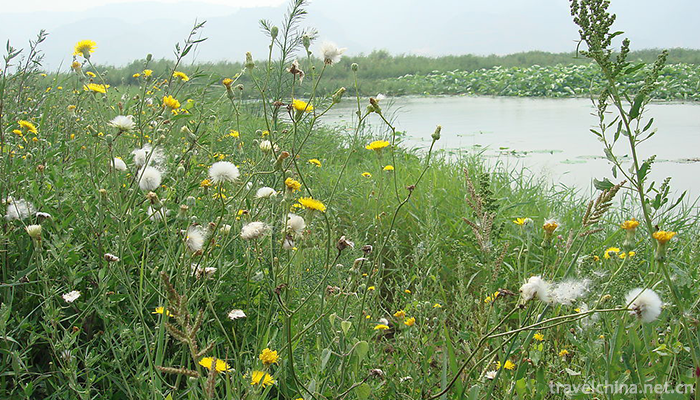

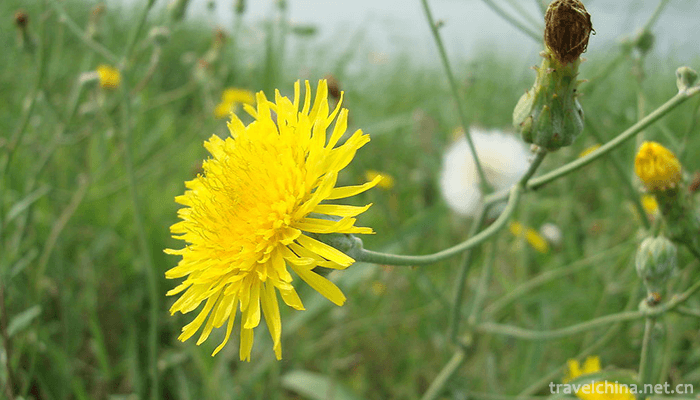
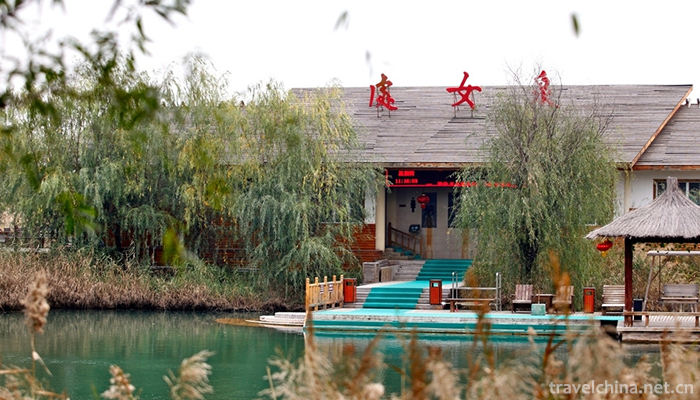
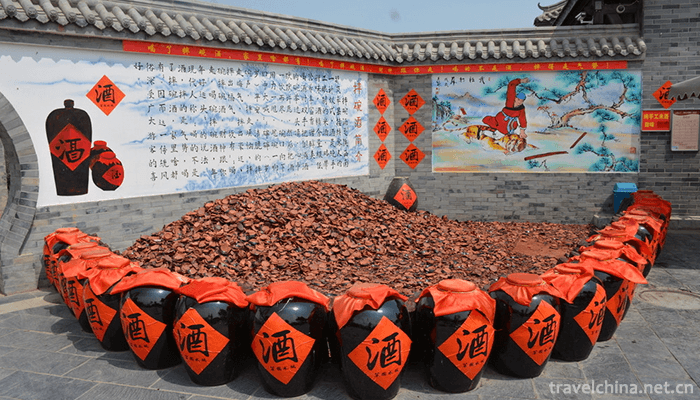

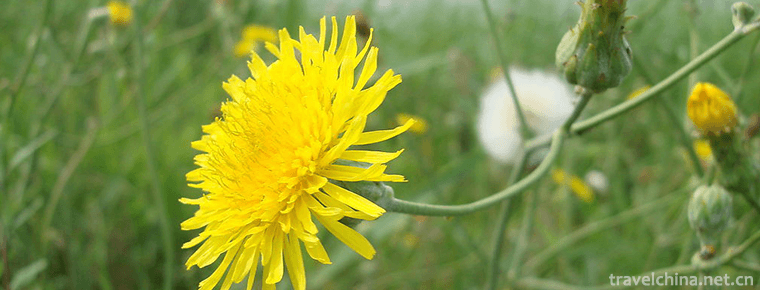
-
2.Beijing World Flower Garden
The World Flower Grand View Garden is located on the north side of Nansi Ring Auxiliary Road and the east side of Jingkai Highway in Beijing. It has superior geographical position and convenient trans
Time 2018-12-26 -
3.88 Floor Sightseeing Hall of Jinmao Building
Jinmao Tower's 88th floor sightseeing hall, located in Shanghai, China, has a height of 340.1 meters and an area of 1520 square meters. It is the largest sightseeing hall in China at present. It is th
Time 2019-01-26 -
4.Bru
Bru, Mongolian means throwing. Competitions are divided into two categories: long throw and accurate throw, mostly held in festive festivals. The long throw is to decide
Time 2019-04-04 -
5.Daur Uqin
Daur Uqin, also known as "Wuchun", is a form of Daur folk art storytelling. It forms and prevails in Meilis Daur, Fulaerji, Fuyu and Longjiang counties of Qiqihar City, Heilongjiang Province
Time 2019-04-22 -
6.Alpine Hand in Hand Dance
"Hand-in-hand dance" is a kind of self-entertainment dance with the longest history and widespread spread spread among the folk dances of the mountain nationality. During the wedding and fes
Time 2019-04-30 -
7.Bangkok in Puzhou
Bangzi of Puzhou is named for its origin in ancient Puzhou. Jinzhong and Northern Shanxi are called "Bangzi on the South Road" or "Bangzi Opera on the South Road", Shangdang is cal
Time 2019-06-09 -
8.Monkey Drum Encouragement of Yao Nationality
"Monkey Drum Dance of Yao Nationality" is called "Jiuglang" in Yao language. It is popular among Baiku Yao people in Yaoshan. "Monkey Drum Encouragement" is performed in
Time 2019-07-11 -
9.Langmu Temple
Langmusi town is a small town under the jurisdiction of Luqu County, Gannan Tibetan Autonomous Prefecture, Gansu Province, and Ruoergai County, Aba Tibetan and Qiang Autonomous Prefecture
Time 2020-11-07 -
10.Luzhou transportation
By the end of 2017, the number of civil motor vehicles in Luzhou had reached 678200, an increase of 74700 over the beginning of the year. Among them, 352400 cars (including 294 tricycles and low-speed trucks), an increase of 56500, and 323700 motorcycles, an increase of 17600
Time 2020-12-14 -
11.Suining secondary industry
In 2019, the city's industrial added value will reach 49.158 billion yuan, an increase of 8.7%, contributing 50.7% to economic growth, and boosting economic growth by 4.1 percentage points. The number of Industrial Enterprises above Designated Size reached 573
Time 2020-12-16 -
12.Location of Meishan
Meishan is located in the southwest of Chengdu Plain and the middle reaches of Minjiang River in Sichuan Basin. It spans 29 ° 24 ′ - 30 ° 16 ′ N and 102 ° 49 ′ - 104 ° 30 ′ e. it is 150 km long from east to west and 72 km wide from south to north. It connects Chengdu,
Time 2020-12-18